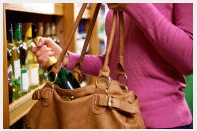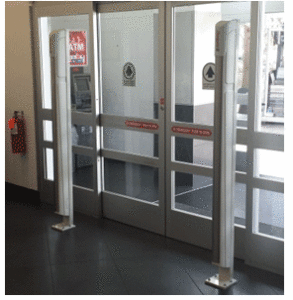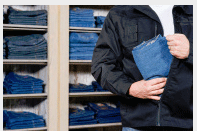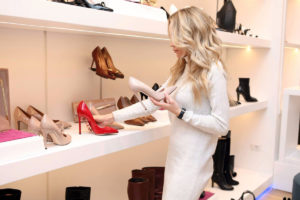 A unified leadership team for any business can be a catalyst for driving great results. When managers are all communicating with each other, sharing information and giving honest feedback an entire team benefits. Managers in those environments tend to see the big picture and can assist a peer in another department in their absence. As the staff members see this cohesion they understand that they can’t get one over on a supervisor or pit one against another. A management team that works well together can prevent situations where an employee may lie and not get caught or manipulate managers by playing what I call the “Mom vs. Dad” card.
A unified leadership team for any business can be a catalyst for driving great results. When managers are all communicating with each other, sharing information and giving honest feedback an entire team benefits. Managers in those environments tend to see the big picture and can assist a peer in another department in their absence. As the staff members see this cohesion they understand that they can’t get one over on a supervisor or pit one against another. A management team that works well together can prevent situations where an employee may lie and not get caught or manipulate managers by playing what I call the “Mom vs. Dad” card.
Working in a library, I see student workers trying to manipulate one or two “nice” staff members on a somewhat regular basis. The students may not see what they are doing as lying or being dishonest, they just know that there are certain supervisors who will probably say “Yes” to almost any request. The request may be to leave early or they want to call out of work for silly reasons. I had one employee who wanted to leave early because her pet fish was sick, even though she had spent one hour of her two-hour shift at work when she made the request. Now seriously, was she going to take this fish to a veterinarian? She chose the wrong supervisor to approach because the supervisor came to me and told me of the request and asked me for my opinion. While I gave the student the option to stay she was reminded that requests for leaving early impacted hiring decisions for the next semester. She stayed for her next hour.
In another situation, I had to have a conversation with a worker over her behavior with co-workers and supervisors. I made it clear the behavior would have to change and steps on how to improve. I did let her know I wanted her to be successful but I would not allow the behavior to continue if she was going to work for us. The employee came back later and attempted to give her resignation and turn in her equipment to one of our nicer staff members. The staff member was super sweet and was going to let it go with a, “I’m sorry to see you go.” The supervisor who was with me when I spoke with the employee walked in on the conversation and the mood changed. The employee tried to lie about the conversation and what was said to her. This supervisor cut off her excuses and reminded her what was really said during our talk. The employee left in a huff but the blame game was shut down. When the first supervisor was asked why she was just going to let the employee make her complaints and leave the supervisor said she liked to give people the benefit of the doubt. It’s no wonder why employees like to go to her to get what they want.
While we have a great team of supervisors, I do have problems with some who do not like to be the “bad guy”. A management team needs to share the burden of holding employees accountable for their actions. It is unfair to expect one or two supervisors to conduct discussions involving poor performance or behavior problems and/or administer corrective actions. These supervisors are the ones who appear to be the mean ones to the team members and acquire an undeserved reputation as being “unfair” or “harsh”. The best management teams are those in which everyone participates in the corrective action process. They document talks with employees and record them in some form of record keeping so when review time comes around those notes play a part in the scoring. These teams also have supervisors taking partners with each other making it harder for one person to be pitted against another.
There will always be those employees who try to get away with something whether it is not working as hard as their co-workers to outright lying to a supervisor. Those management teams that communicate amongst themselves and share the responsibility for administering correction or discipline when necessary will find it easier to identify and keep the best workers. Build a great store team by creating a cohesive management team that communicates with each other and shares the responsibilities of leadership.
 A Target or Walmart store can and are able to fight shoplifting in their stores every day of the year.
A Target or Walmart store can and are able to fight shoplifting in their stores every day of the year. Hopefully, your store is one of those places where employees look forward to coming to work. You know what I’m talking about it’s that environment where everyone is happy to be there. Employees know they are there to get a job done and take pride in the service they offer to the customers. It’s the type of job where people may have an off day but their co-workers are supportive and help pick them up. It happens to all of us. These jobs have a manager who interacts with the employees and takes a real interest in each of them. The boss may take time to say hello and greet everyone. They know their employees by name and may even know their families. Unfortunately, not every workplace has such a camaraderie amongst the team members. There is any number of reasons this can happen but a major contributor to an unhappy workplace can be the hiring of an employee with a poor attitude.
Hopefully, your store is one of those places where employees look forward to coming to work. You know what I’m talking about it’s that environment where everyone is happy to be there. Employees know they are there to get a job done and take pride in the service they offer to the customers. It’s the type of job where people may have an off day but their co-workers are supportive and help pick them up. It happens to all of us. These jobs have a manager who interacts with the employees and takes a real interest in each of them. The boss may take time to say hello and greet everyone. They know their employees by name and may even know their families. Unfortunately, not every workplace has such a camaraderie amongst the team members. There is any number of reasons this can happen but a major contributor to an unhappy workplace can be the hiring of an employee with a poor attitude. C
C
 With darker daylight hours comes the need for more coffee, the use of lights earlier and a plan to keep crime away from your store or business. Have you considered that one of the following types of crime could affect you?
With darker daylight hours comes the need for more coffee, the use of lights earlier and a plan to keep crime away from your store or business. Have you considered that one of the following types of crime could affect you?
 Could it be that Santa Claus is not always a jolly, giving man? Oh yeah. Take a
Could it be that Santa Claus is not always a jolly, giving man? Oh yeah. Take a 
 As a manager of a retail shop, the layout of the store is probably out of your hands and there is nothing to do about it.
As a manager of a retail shop, the layout of the store is probably out of your hands and there is nothing to do about it. Kleptomania is a mental disorder. Not as serious as a more severe case of schizophrenia for example, but a mental disorder nonetheless. The inability of people suffering from this disorder to stop themselves from grabbing merchandise and stealing it is a problem mental health professionals try to understand and help these sufferers find a way to overcome.
Kleptomania is a mental disorder. Not as serious as a more severe case of schizophrenia for example, but a mental disorder nonetheless. The inability of people suffering from this disorder to stop themselves from grabbing merchandise and stealing it is a problem mental health professionals try to understand and help these sufferers find a way to overcome. You know the drill. At the end of the day, you find your merchandise tags on the floor or hidden in your fitting rooms. Shoplifters bring your merchandise into a fitting room and put it on under their clothes. Sometimes many layers of your apparel are under the clothes they wore in.
You know the drill. At the end of the day, you find your merchandise tags on the floor or hidden in your fitting rooms. Shoplifters bring your merchandise into a fitting room and put it on under their clothes. Sometimes many layers of your apparel are under the clothes they wore in.